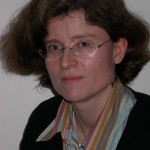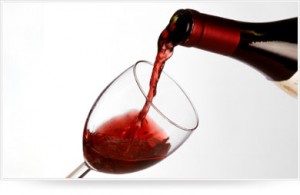The Scientific Board (alphabetical order)
Andy Baker, Magdalena Bieroza, David Brie, Pierre Comon, Weidong Guo, Ivica Kopriva, Stéphane Mounier, Roland Redon, Claire Richard, Nadège Thirion-Moreau
 Andy Baker : (www) Andy Baker is a Professor in the School of Biological, Earth and Environmental Sciences at UNSW. Andy joined the University in 2010 and is the Director of the Connected Waters Initiative (CWI) Research Centre, UNSW’s inter-disciplinary groundwater research centre. Andy’s research interests include karst hydrology and geochemistry; the paleoclimate reconstructions from cave stalagmites; isotope geochemistry; the characterisation of organic matter in rivers, ground waters and engineered systems, including potable and recycled water; and surface and groundwater quality monitoring.
Andy Baker : (www) Andy Baker is a Professor in the School of Biological, Earth and Environmental Sciences at UNSW. Andy joined the University in 2010 and is the Director of the Connected Waters Initiative (CWI) Research Centre, UNSW’s inter-disciplinary groundwater research centre. Andy’s research interests include karst hydrology and geochemistry; the paleoclimate reconstructions from cave stalagmites; isotope geochemistry; the characterisation of organic matter in rivers, ground waters and engineered systems, including potable and recycled water; and surface and groundwater quality monitoring.
 Dr Magdalena Bieroza : (www) My research interests concentrate mainly on catchment hydrology ( water quality, C, N, and P cycling), water treatment (potable water quality, water supply), modelling and dissemination of environmental data using statistical analysis, geomatics (GIS, remote sensing), and advanced computing technologies. I am also interested in intelligent data processing systems (analysing and solving complex planning and optimisation problems), computer assisting systems in decision-making processes in environmental sciences using artificial neural networks, evolutionary algorithms, decision trees and fuzzy logic, and data-mining of complex environmental databases. An important part of my research has been focused on advanced computational techniques for analysis of large environmental datasets, including continuous online measurements of water quality (Carstea et al., 2010), pattern-recognition and calibration of high-dimensional water quality data (Bieroza et al., 2009, 2010), long-term water quality datasets and spatial data (Howden et al., 2010), and spatial data analysis using GIS technologies.
Dr Magdalena Bieroza : (www) My research interests concentrate mainly on catchment hydrology ( water quality, C, N, and P cycling), water treatment (potable water quality, water supply), modelling and dissemination of environmental data using statistical analysis, geomatics (GIS, remote sensing), and advanced computing technologies. I am also interested in intelligent data processing systems (analysing and solving complex planning and optimisation problems), computer assisting systems in decision-making processes in environmental sciences using artificial neural networks, evolutionary algorithms, decision trees and fuzzy logic, and data-mining of complex environmental databases. An important part of my research has been focused on advanced computational techniques for analysis of large environmental datasets, including continuous online measurements of water quality (Carstea et al., 2010), pattern-recognition and calibration of high-dimensional water quality data (Bieroza et al., 2009, 2010), long-term water quality datasets and spatial data (Howden et al., 2010), and spatial data analysis using GIS technologies.
 David Brie : (www)
David Brie : (www)

 Pierre Comon : (www) Blind techniques: equalization, identification, source separation (past), Digital communications, interception, surveillance (past), Tensor decompositions, Data analysis, High-order statistics, Biomedical, Environment
Pierre Comon : (www) Blind techniques: equalization, identification, source separation (past), Digital communications, interception, surveillance (past), Tensor decompositions, Data analysis, High-order statistics, Biomedical, Environment
Pierre Comon is research director with CNRS, at http://www.gipsa-lab.grenoble-inp.fr. His reseach interests include the development of tensor tools for data mining in general, and for health and environment in particular. In this context, Blind Source Separation and Independent Component Analysis, which have been his main concern these last twenty years, may be seen as an application. Some tensor codes have been put online in 2009 and can be freely downloaded; see the « projects » tab at the speaker home page: http://www.gipsa-lab.grenoble-inp.fr/~pierre.comon
 Weidong Guo : (www) My research interest is to characterize DOM in natural and engineered systems and evaluate the environmental impacts of DOM based on the DOM characteristics. In one research topic, I use fluorescence spectroscopy data to examine the temporal and spatial distributions of DOM in lakes and rivers particularly relying on fluorescence EEM-PARAFAC. Recent EEM-PARAFAC applications include the prediction of BOD and COD in urban river water affected by wastewater effluent, organic carbon source tracing for a recently constructed dam reservoir, and characterizing DOM changes during storm runoff. I often make effort to correlate the DOM fluorescence data with other environmental significances of DOM such as disinfection by-products, and heavy metal and organic pollutant binding properties. One of my recent studies was to use an advanced data treatment method called “two-dimensional correlation spectroscopy (2D-COS)” for exploring the structural heterogeneity and the kinetic behavior of DOM.
Weidong Guo : (www) My research interest is to characterize DOM in natural and engineered systems and evaluate the environmental impacts of DOM based on the DOM characteristics. In one research topic, I use fluorescence spectroscopy data to examine the temporal and spatial distributions of DOM in lakes and rivers particularly relying on fluorescence EEM-PARAFAC. Recent EEM-PARAFAC applications include the prediction of BOD and COD in urban river water affected by wastewater effluent, organic carbon source tracing for a recently constructed dam reservoir, and characterizing DOM changes during storm runoff. I often make effort to correlate the DOM fluorescence data with other environmental significances of DOM such as disinfection by-products, and heavy metal and organic pollutant binding properties. One of my recent studies was to use an advanced data treatment method called “two-dimensional correlation spectroscopy (2D-COS)” for exploring the structural heterogeneity and the kinetic behavior of DOM.
 Ivica Kopriva : (www) Algorithms for blind signal processing (independent component analysis, sparse component analysis, nonnegative matrix and tensor factorizations, kernel-based nonlinear blind source separation, blind deconvolution) with applications: in medical image analysis (multi-spectral fluorescent imaging, CT and magnetic resonance imaging), EEG data analysis, hyperspectral remote sensing, chemometrics (extraction of pure components-metabolites from mixtures of NMR and mass spectra). Basis learning methods for sparse representation of signals and algorithms for nonlinear reconstruction of signals sampled in sub-Nyquist regime: applications to missing data reconstruction, denoising and solution of underdetermined blind source separation problem.
Ivica Kopriva : (www) Algorithms for blind signal processing (independent component analysis, sparse component analysis, nonnegative matrix and tensor factorizations, kernel-based nonlinear blind source separation, blind deconvolution) with applications: in medical image analysis (multi-spectral fluorescent imaging, CT and magnetic resonance imaging), EEG data analysis, hyperspectral remote sensing, chemometrics (extraction of pure components-metabolites from mixtures of NMR and mass spectra). Basis learning methods for sparse representation of signals and algorithms for nonlinear reconstruction of signals sampled in sub-Nyquist regime: applications to missing data reconstruction, denoising and solution of underdetermined blind source separation problem.
 Stéphane Mounier : (www) Application of the fluorescence spectroscopy for the organic matter caracterisation and its behaviour in soils, rivers and sea. Studies on the use of PARAFAC as a powerfull tools for 3D-Fluorescence decomposition for environmental purpose. Inner effect and non_linear interferences are also studied in laboratory. With µ-pollutants like trace metallic elements or organic µ-pollutants we use the quenching property for complexant capacities determination or constant of transport. Research on TLRS (Time Life Resolved Spectroscopy) are also investigated for the organic matter caracterisation in natural sample without any treatment or only filtration. All these techniques are applied to environmental monitoring of coastal and soil transfert.
Stéphane Mounier : (www) Application of the fluorescence spectroscopy for the organic matter caracterisation and its behaviour in soils, rivers and sea. Studies on the use of PARAFAC as a powerfull tools for 3D-Fluorescence decomposition for environmental purpose. Inner effect and non_linear interferences are also studied in laboratory. With µ-pollutants like trace metallic elements or organic µ-pollutants we use the quenching property for complexant capacities determination or constant of transport. Research on TLRS (Time Life Resolved Spectroscopy) are also investigated for the organic matter caracterisation in natural sample without any treatment or only filtration. All these techniques are applied to environmental monitoring of coastal and soil transfert.
 Roland Redon : (www)
Roland Redon : (www)
 Claire Richard : (www) Rôle de la lumière solaire sur le devenir des micropolluants organiques dans l’environnement. Etudes mécanistiques des réactions par irradiation en lumière continue et spectroscopie transitoire.
Claire Richard : (www) Rôle de la lumière solaire sur le devenir des micropolluants organiques dans l’environnement. Etudes mécanistiques des réactions par irradiation en lumière continue et spectroscopie transitoire.
 Nadège Thirion-Moreau : (http://www.lsis.org/fiche/nadege_thirion_moreau.html https://www.researchgate.net/profile/Nadege_THIRION-MOREAU/). Blind techniques: identification, source separation, multi-dimensional deconvolution, matrix decompositions (joint (zero)-diagonalization, joint block diagonalization), tensor decompositions, non-stationary signals: adaptative methods, (spatial) quadratic time-frequency distributions, marine surveillance, environmental data analysis.
Nadège Thirion-Moreau : (http://www.lsis.org/fiche/nadege_thirion_moreau.html https://www.researchgate.net/profile/Nadege_THIRION-MOREAU/). Blind techniques: identification, source separation, multi-dimensional deconvolution, matrix decompositions (joint (zero)-diagonalization, joint block diagonalization), tensor decompositions, non-stationary signals: adaptative methods, (spatial) quadratic time-frequency distributions, marine surveillance, environmental data analysis.









 Nadège Thirion-Moreau
Nadège Thirion-Moreau